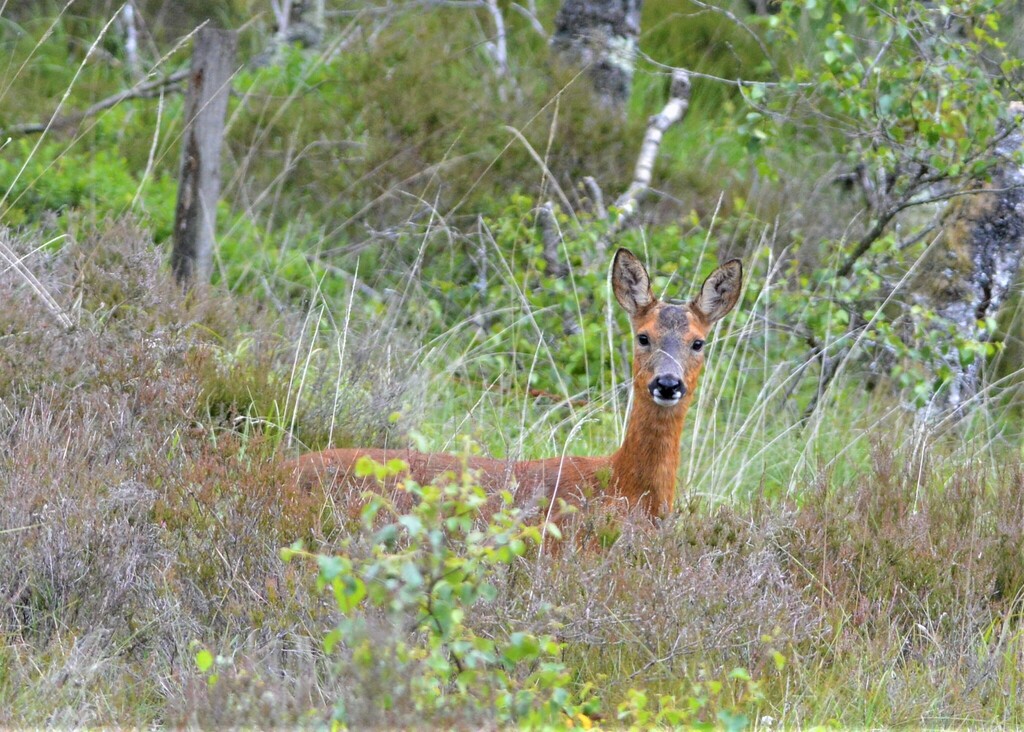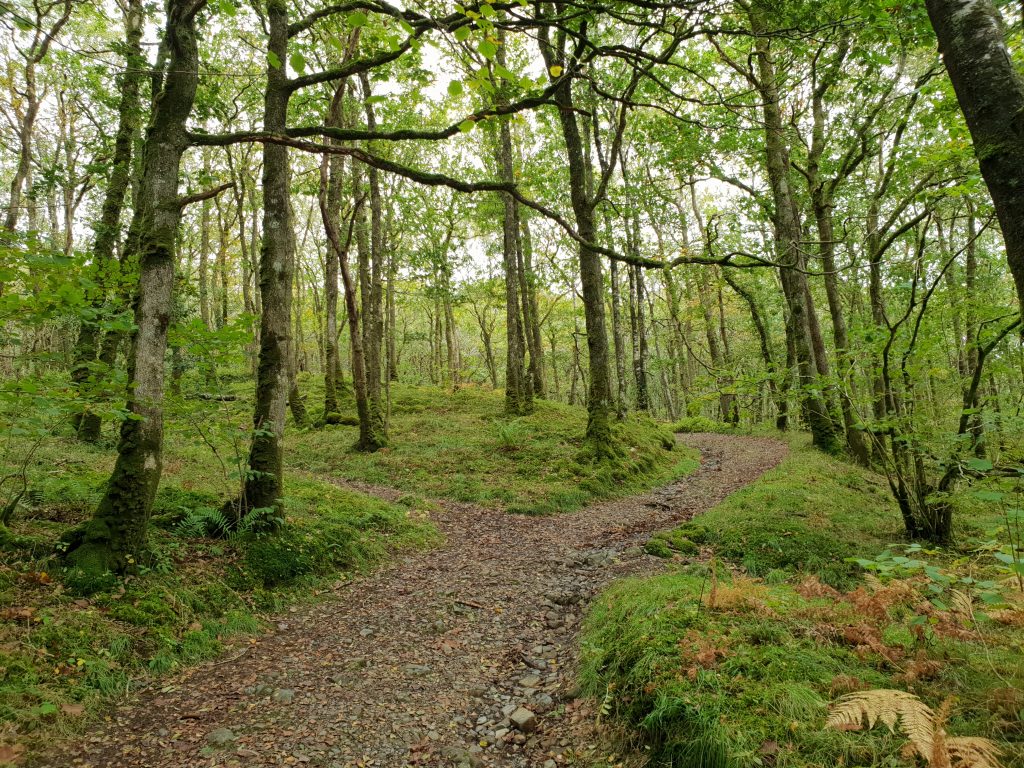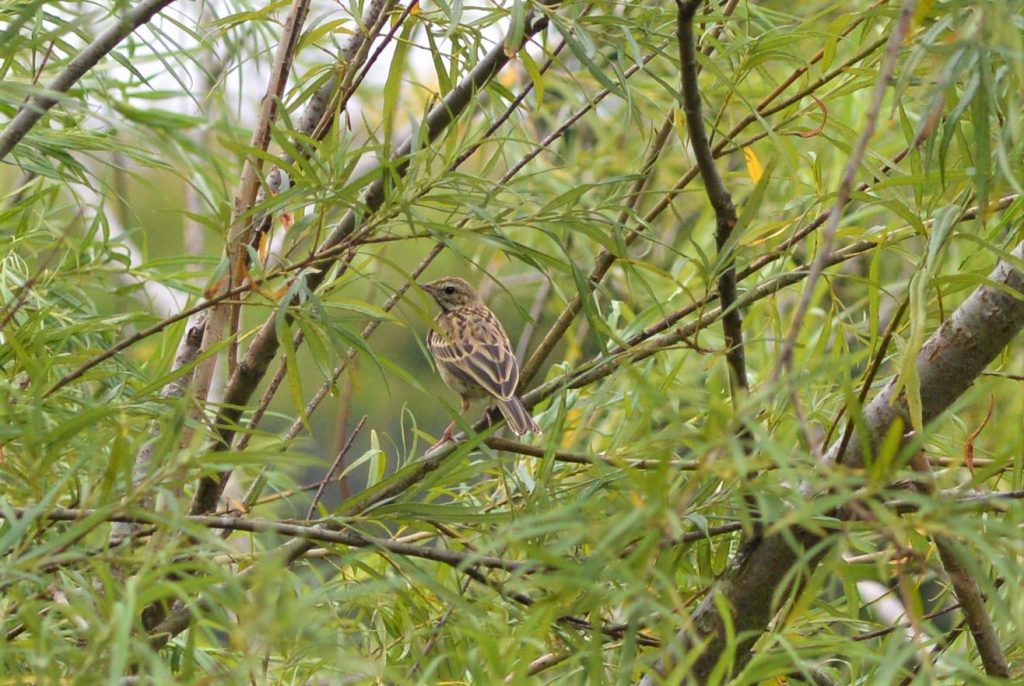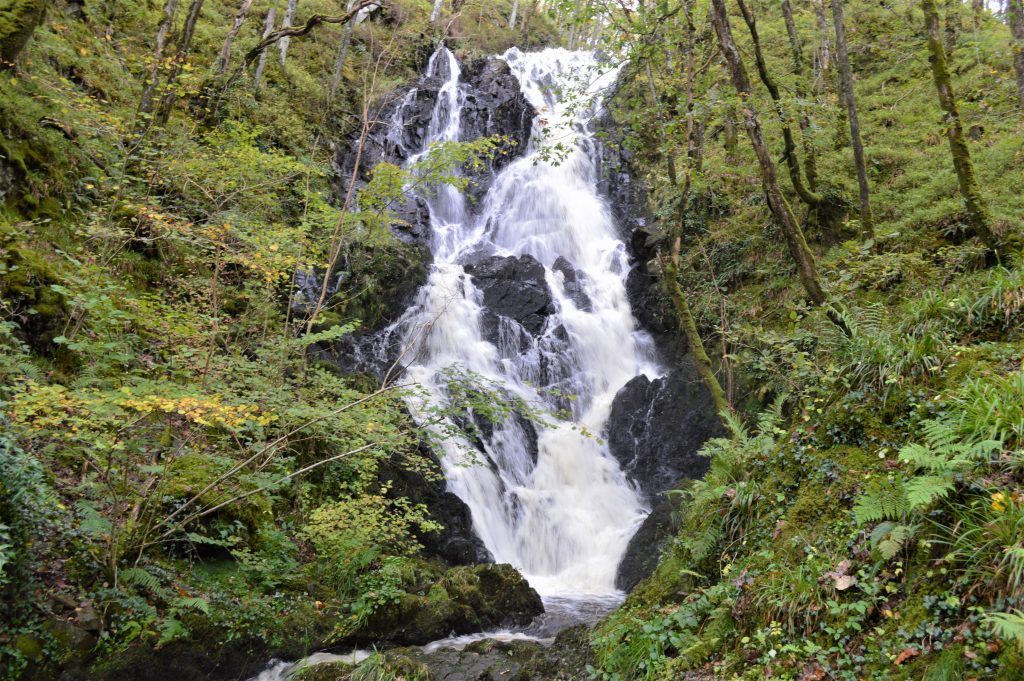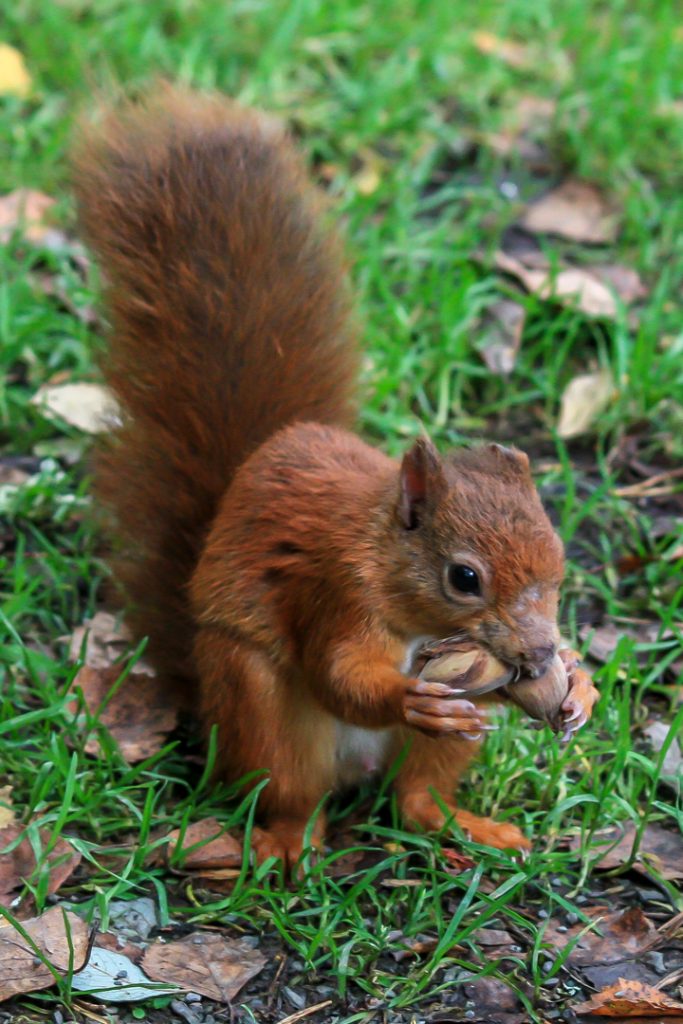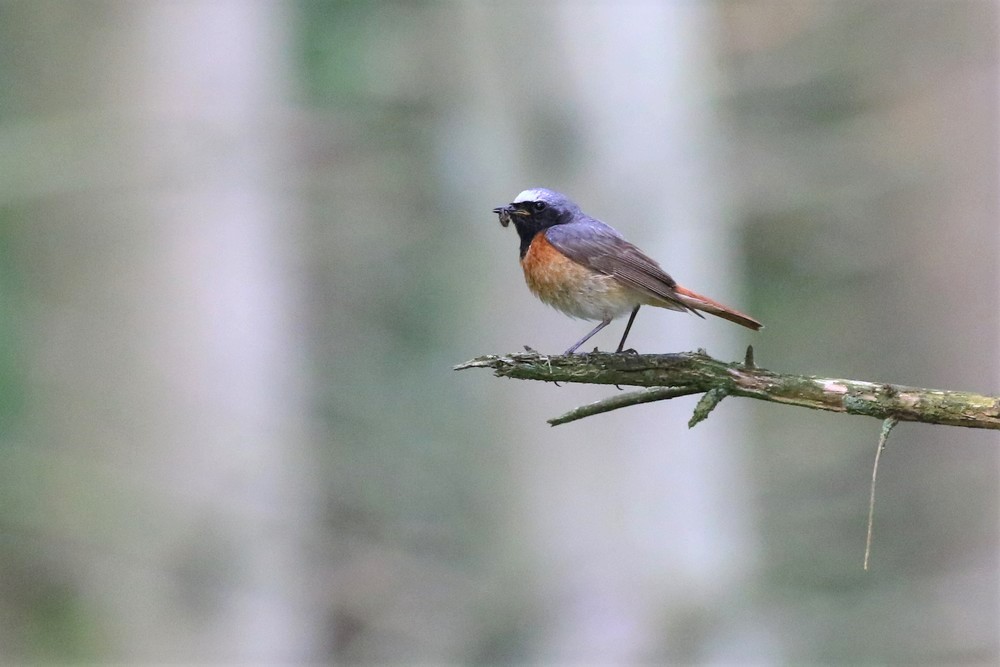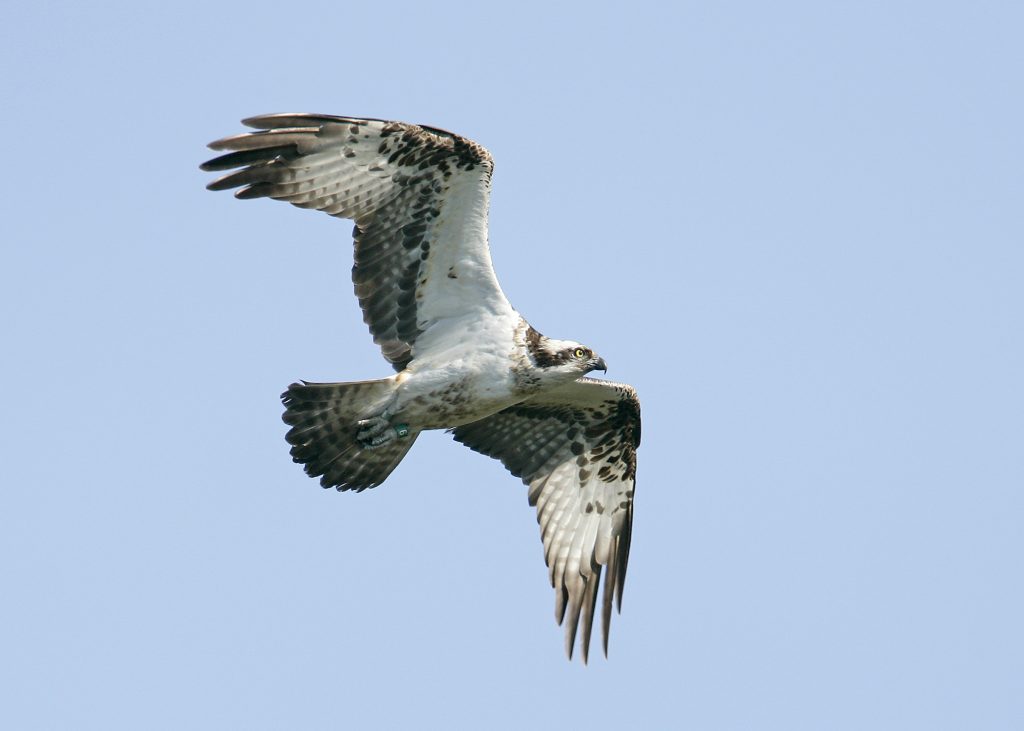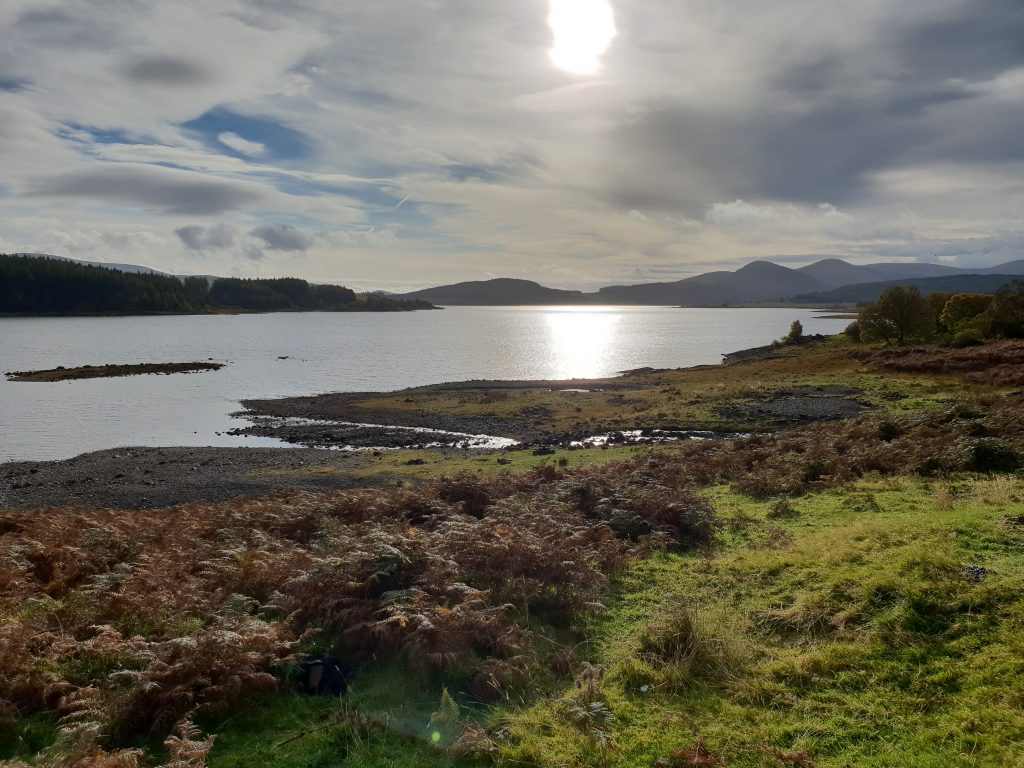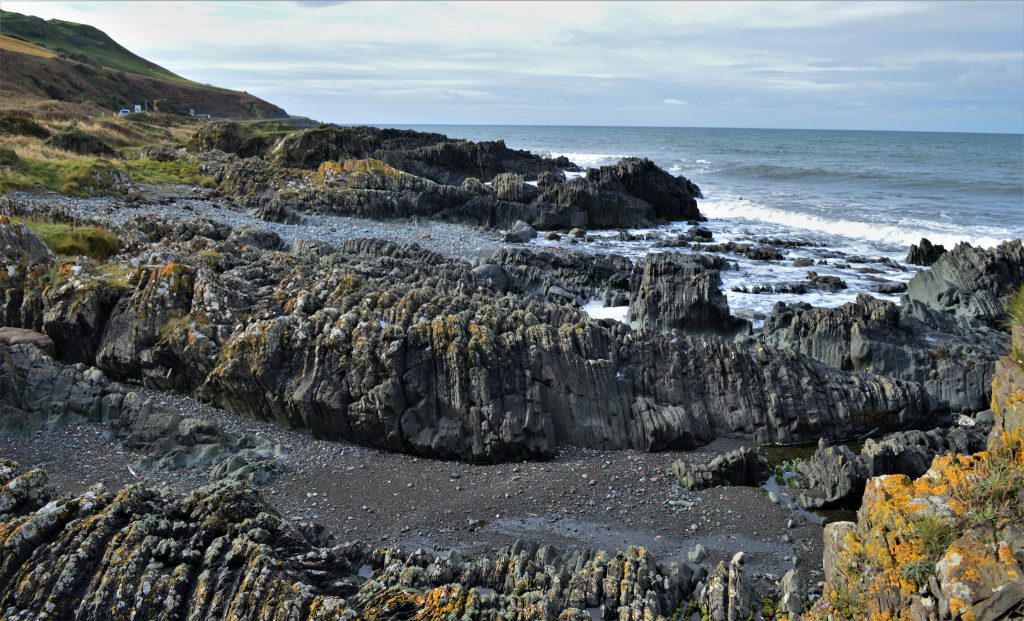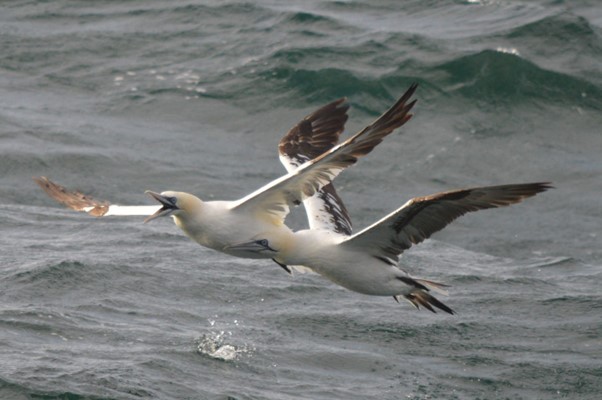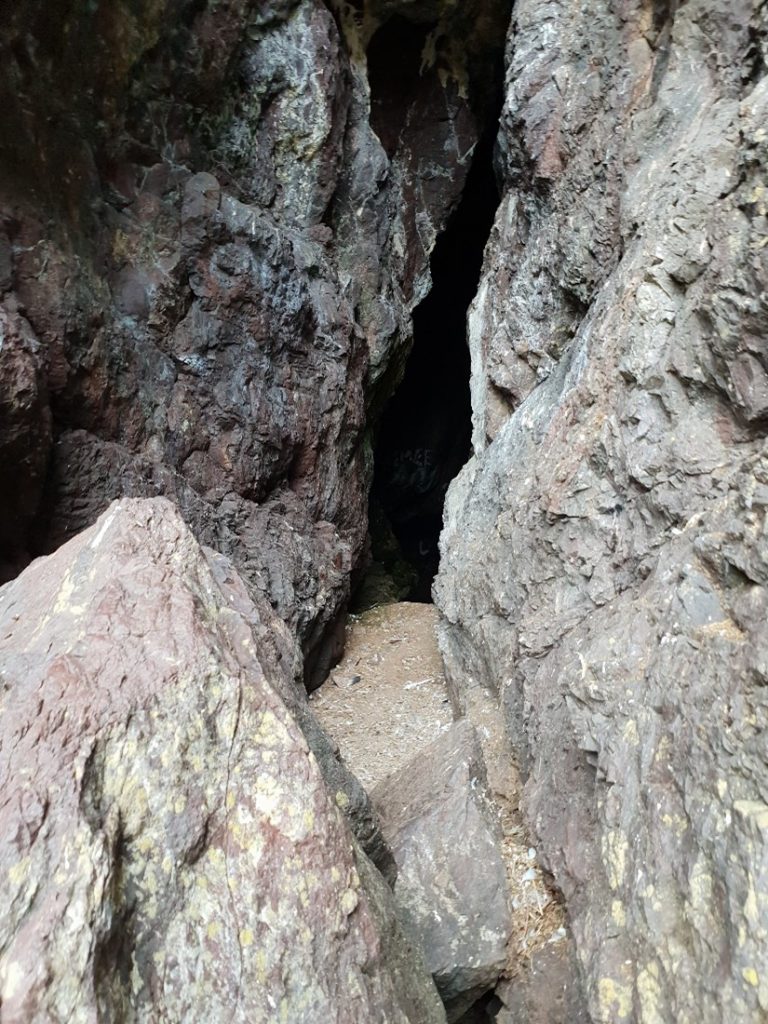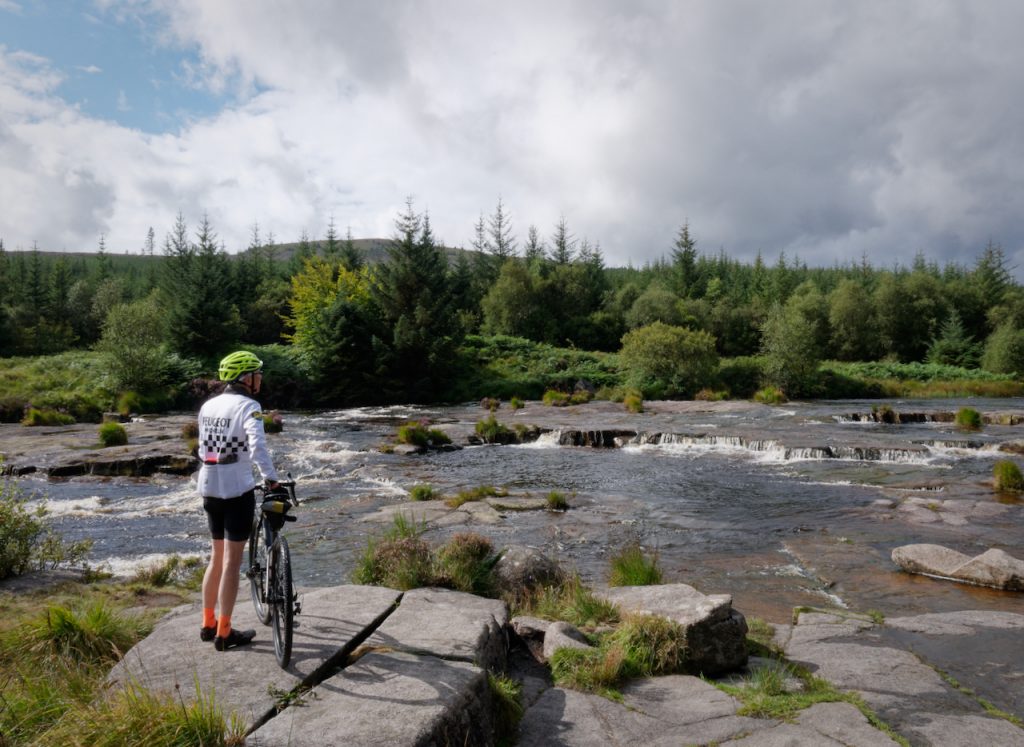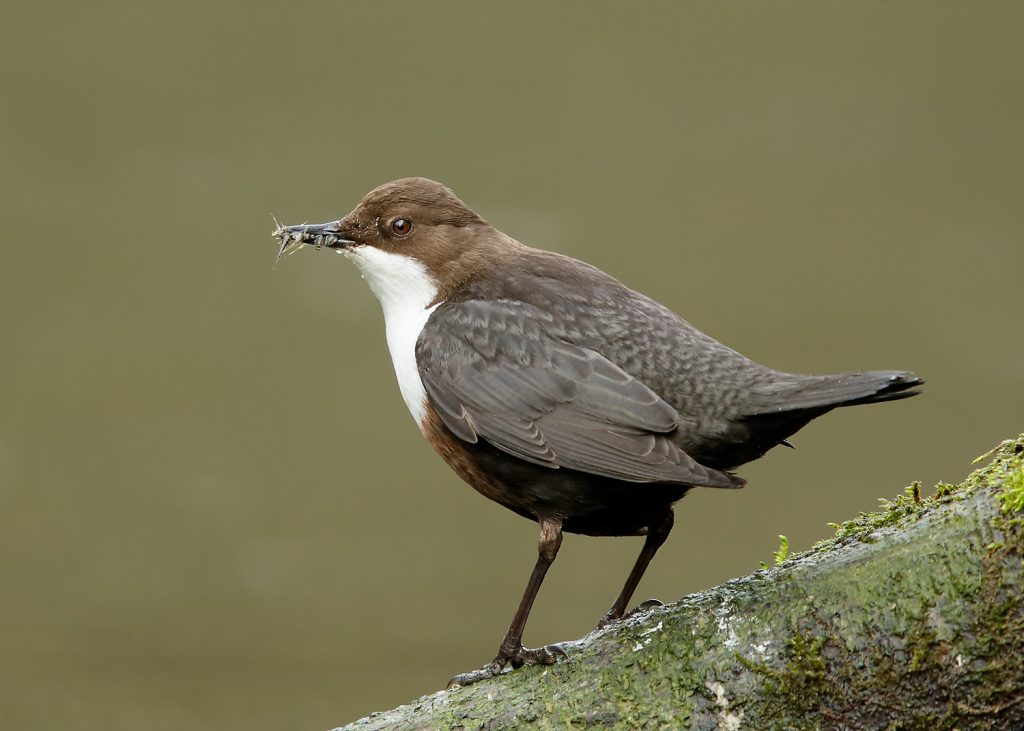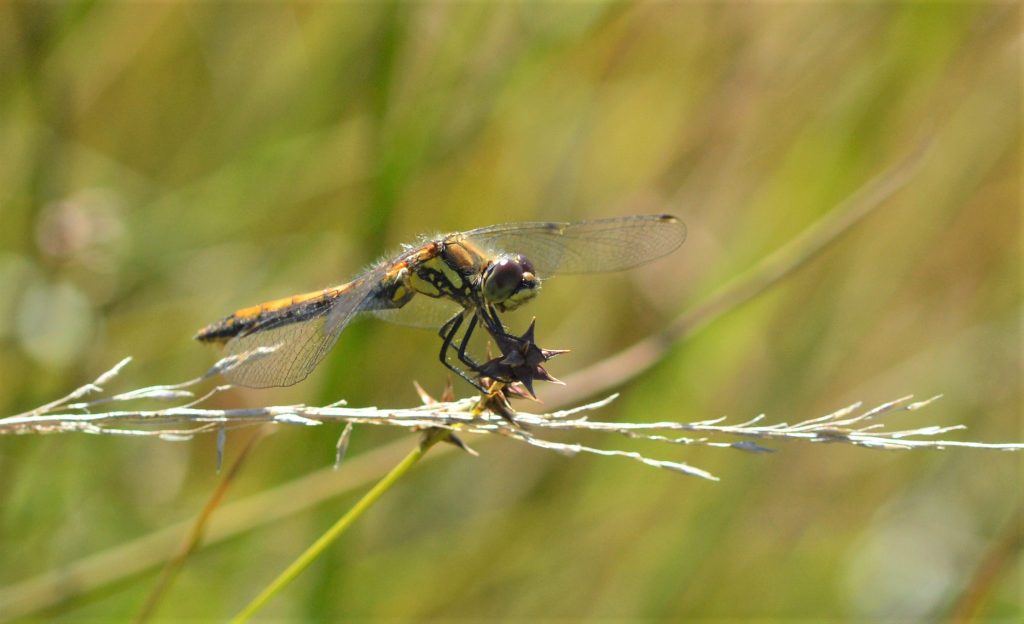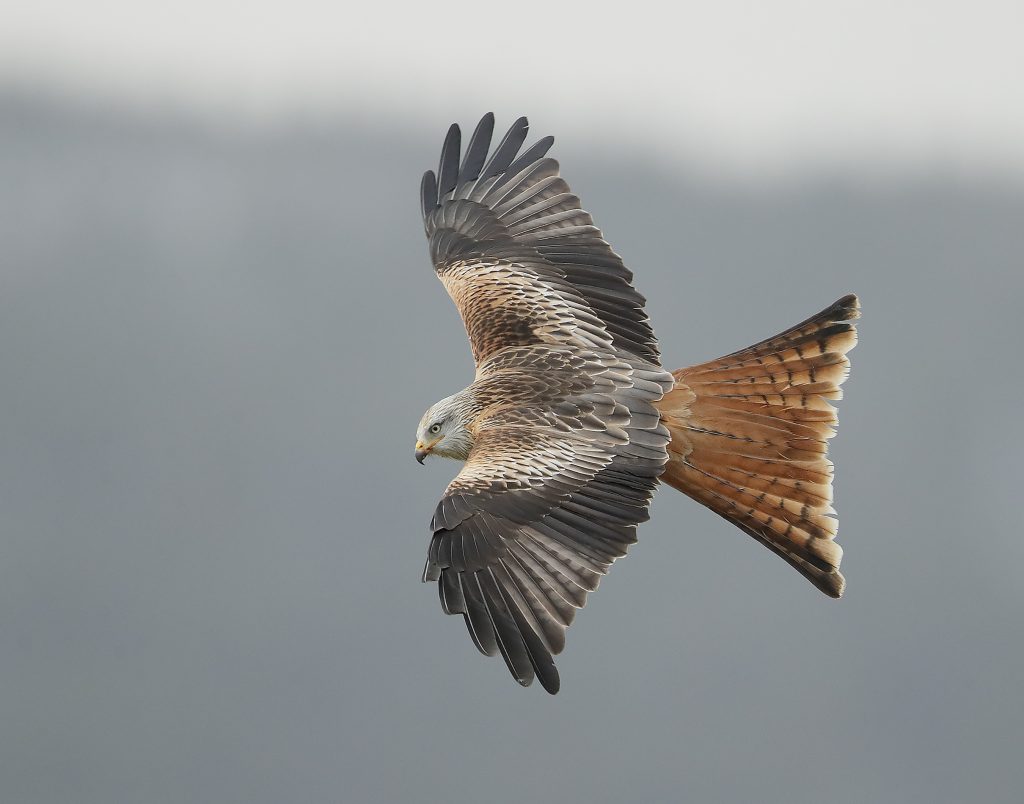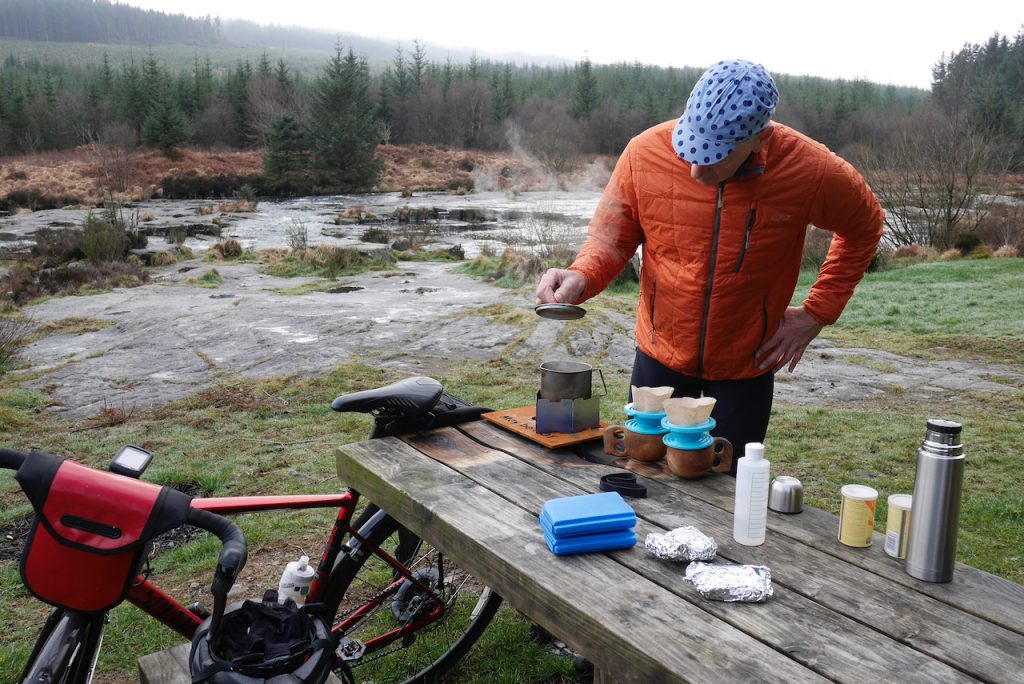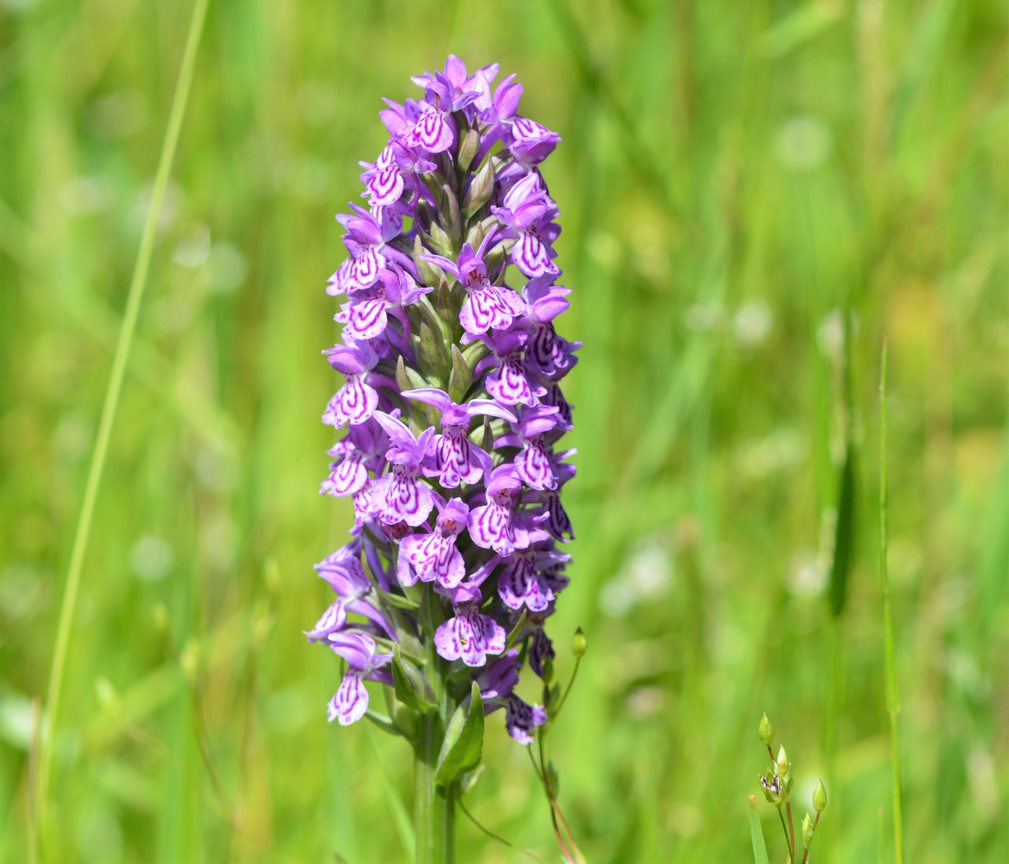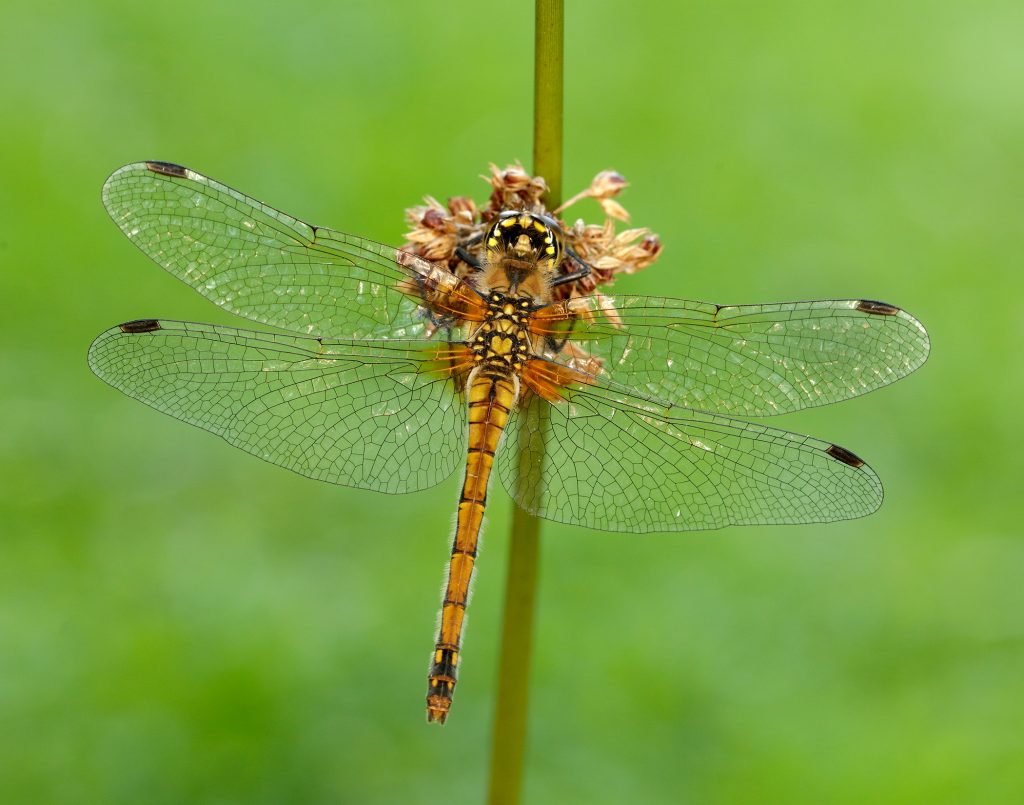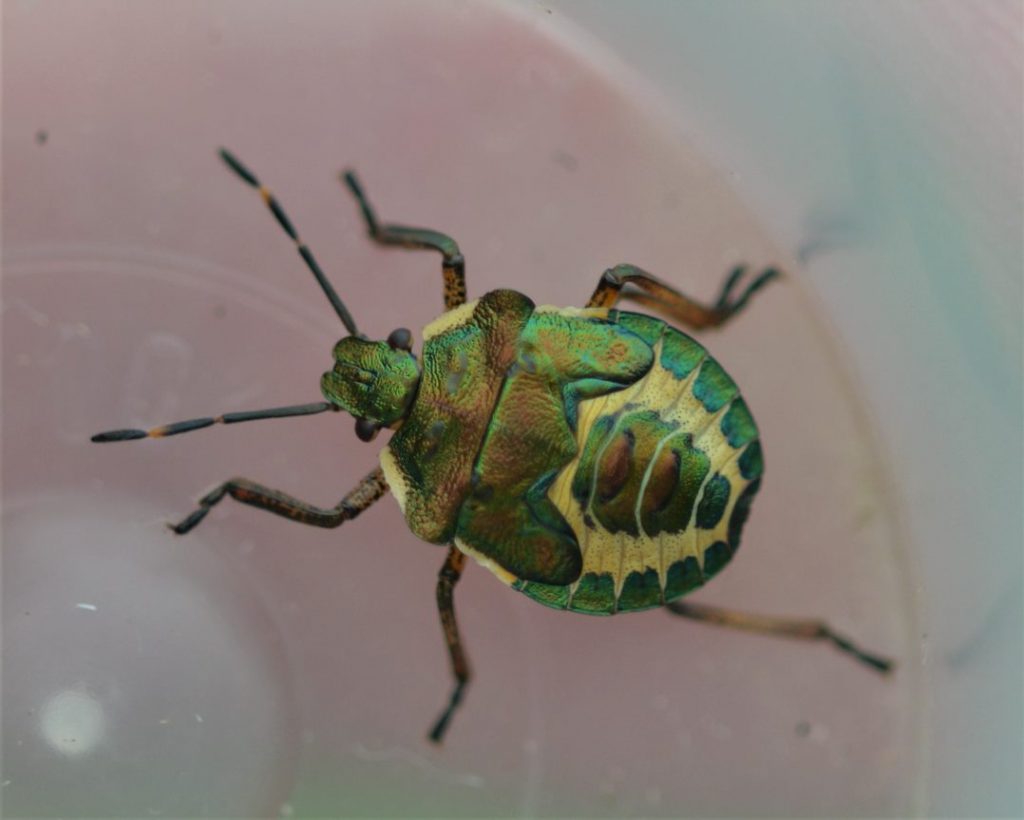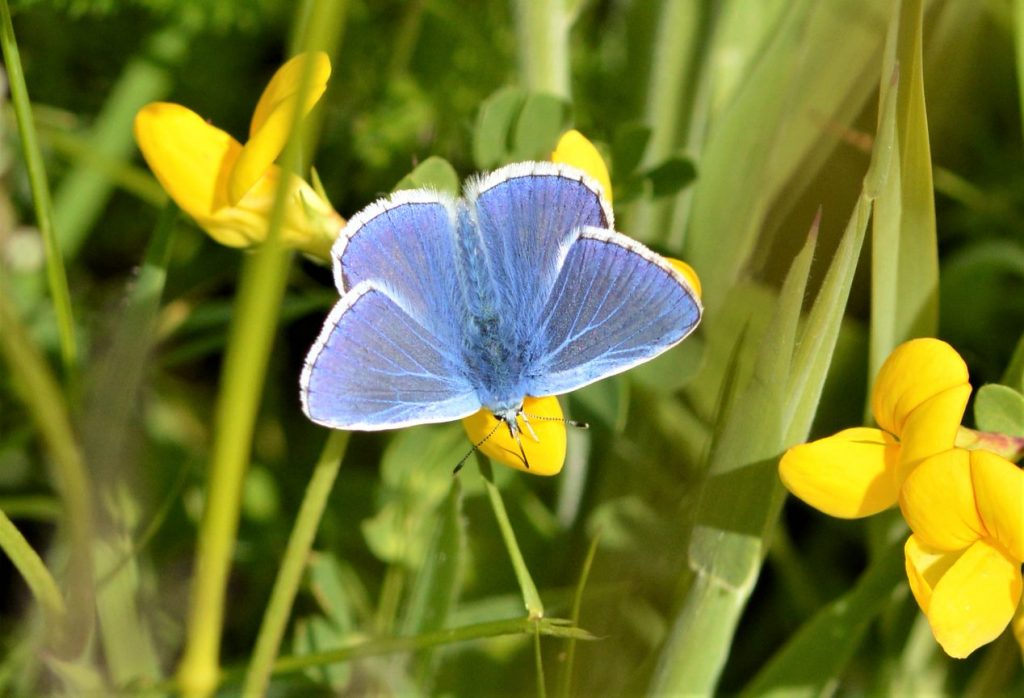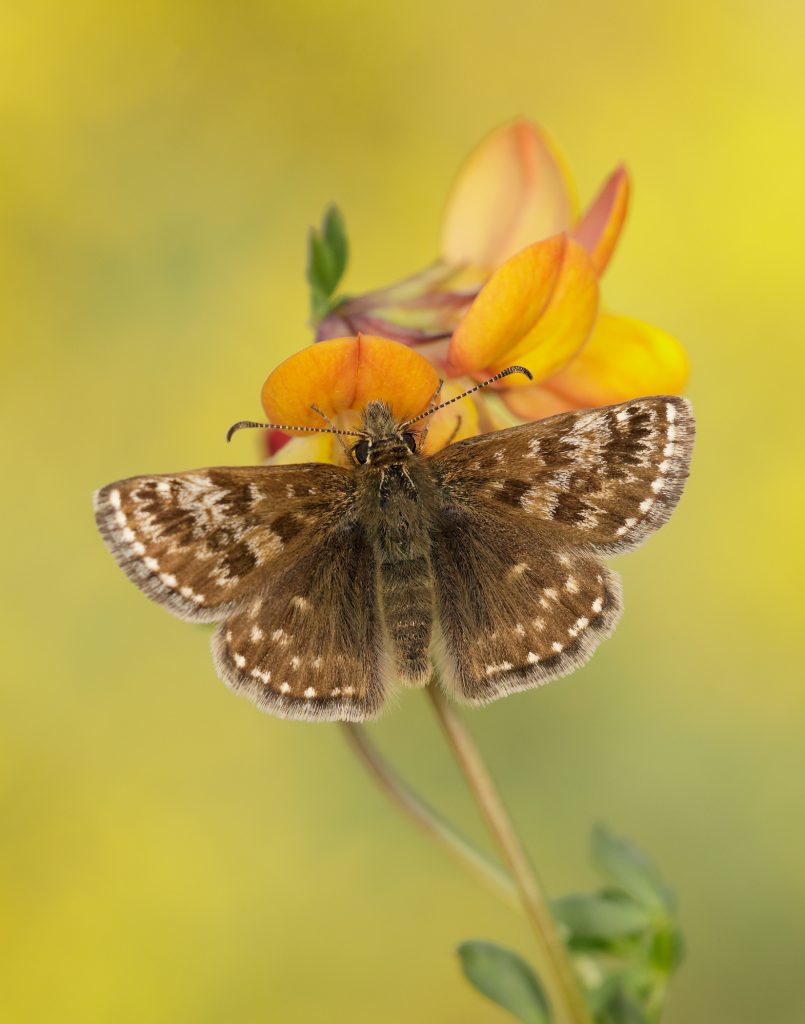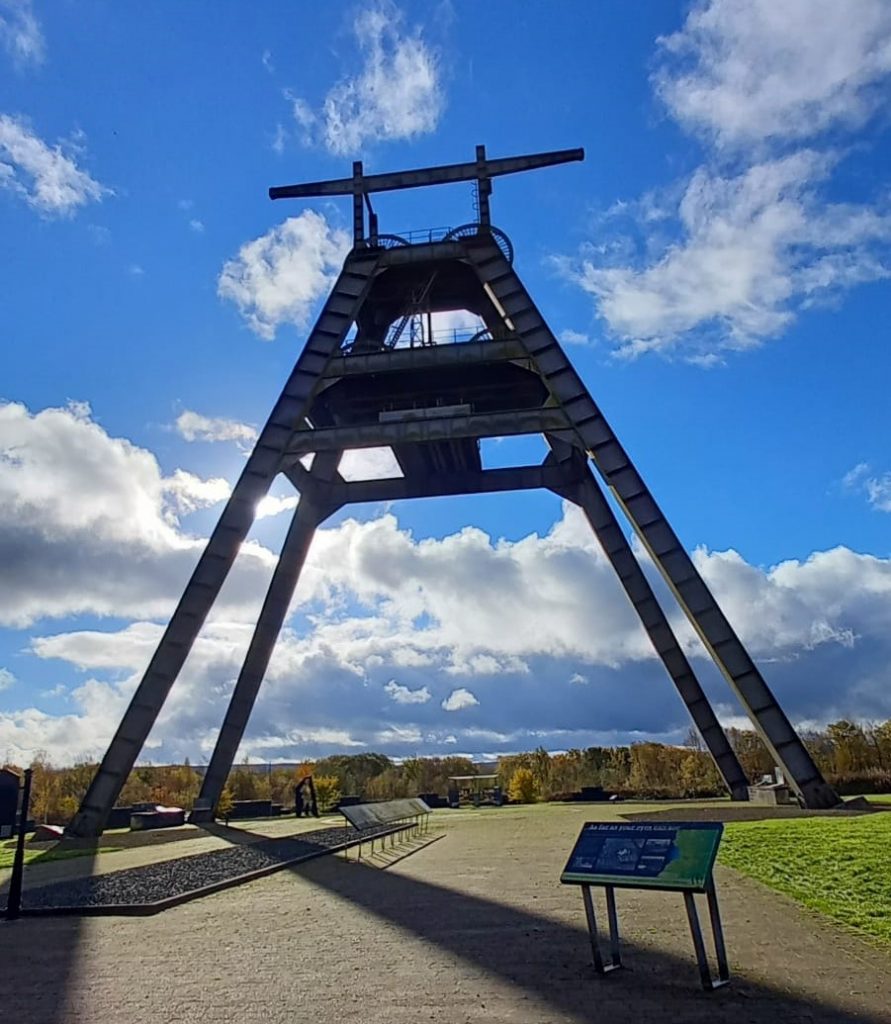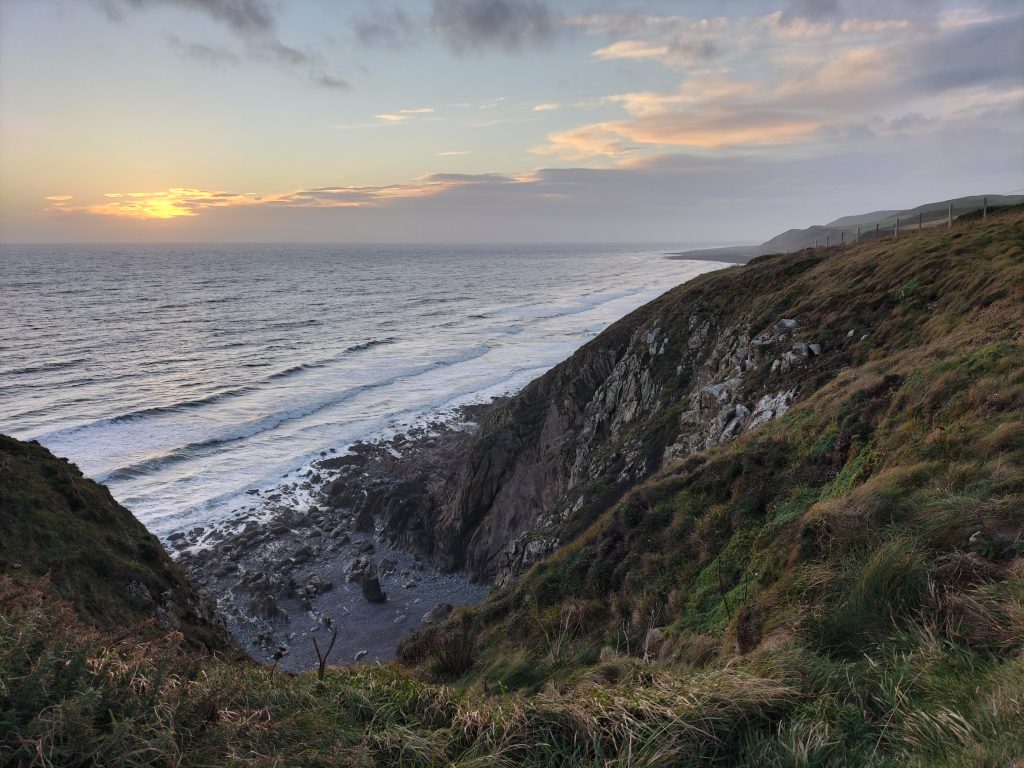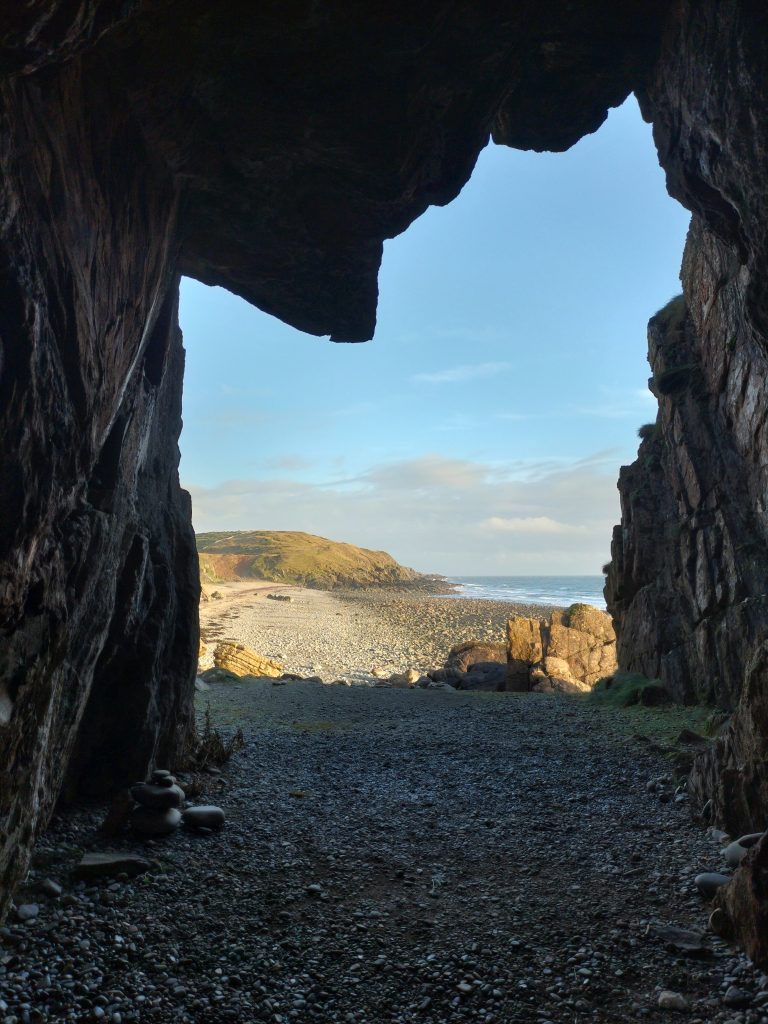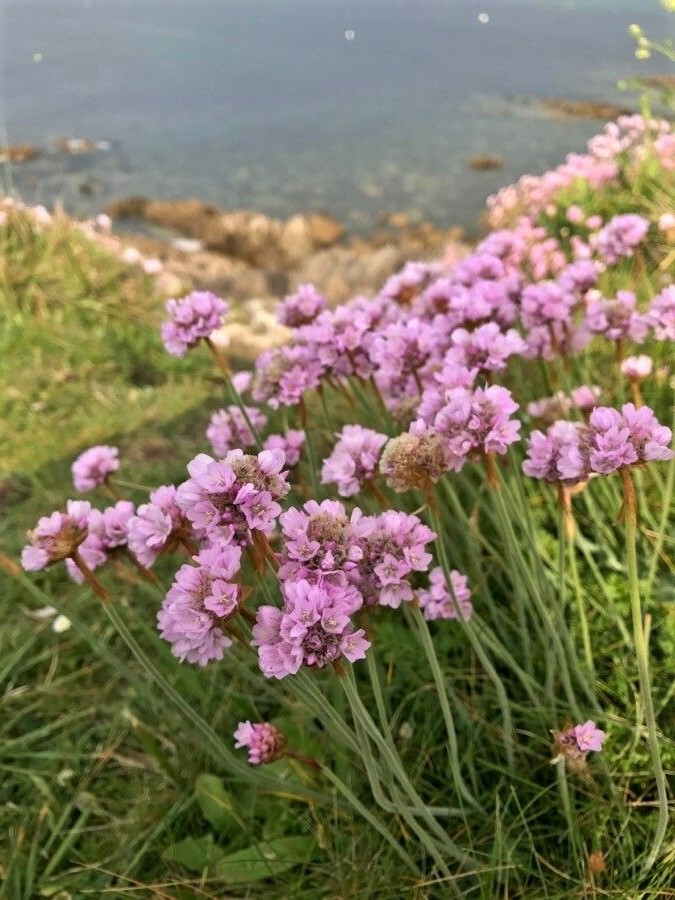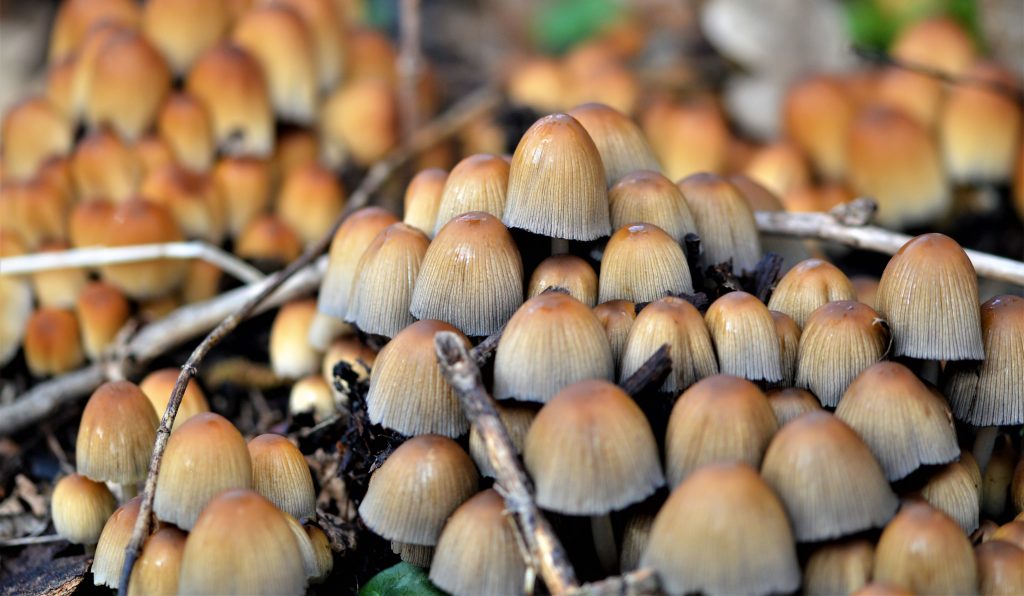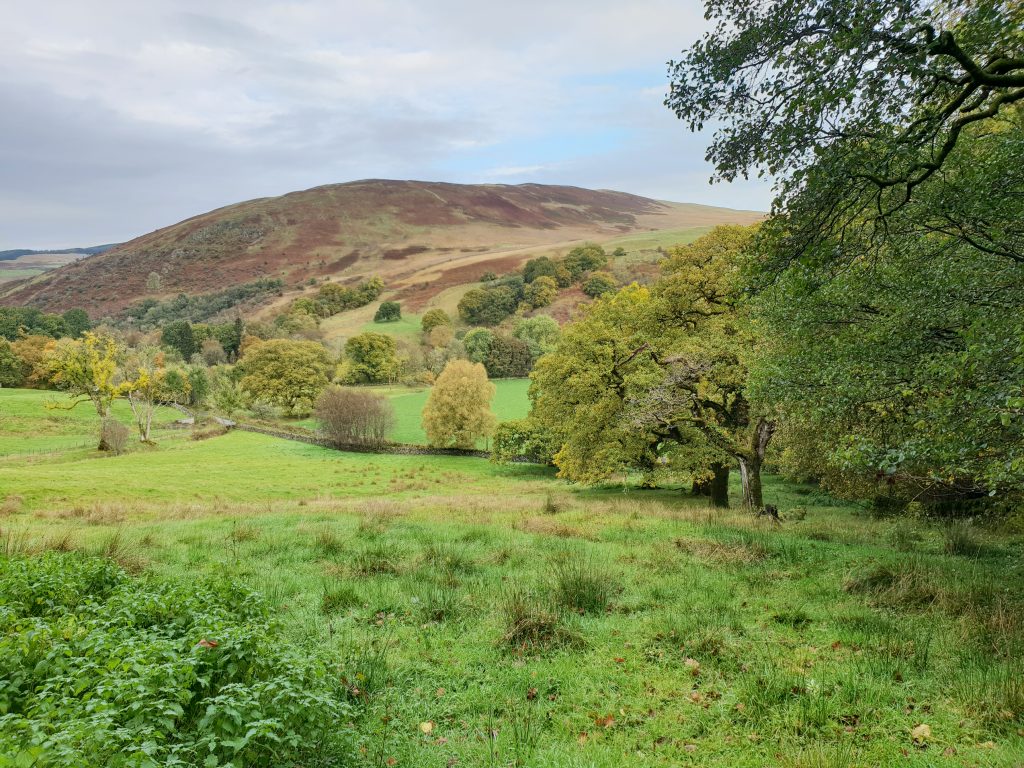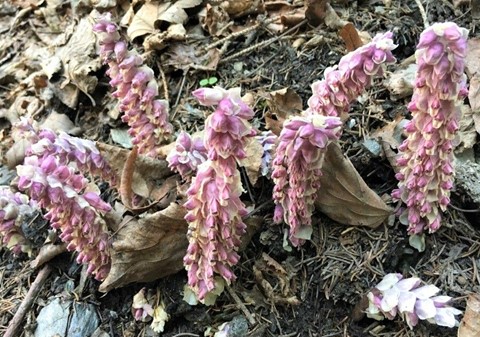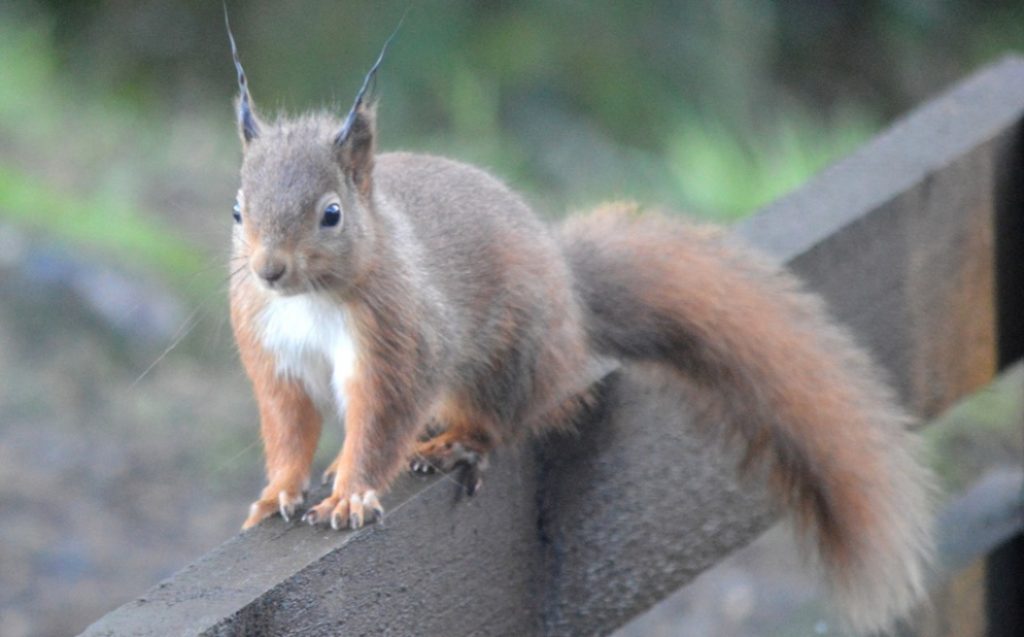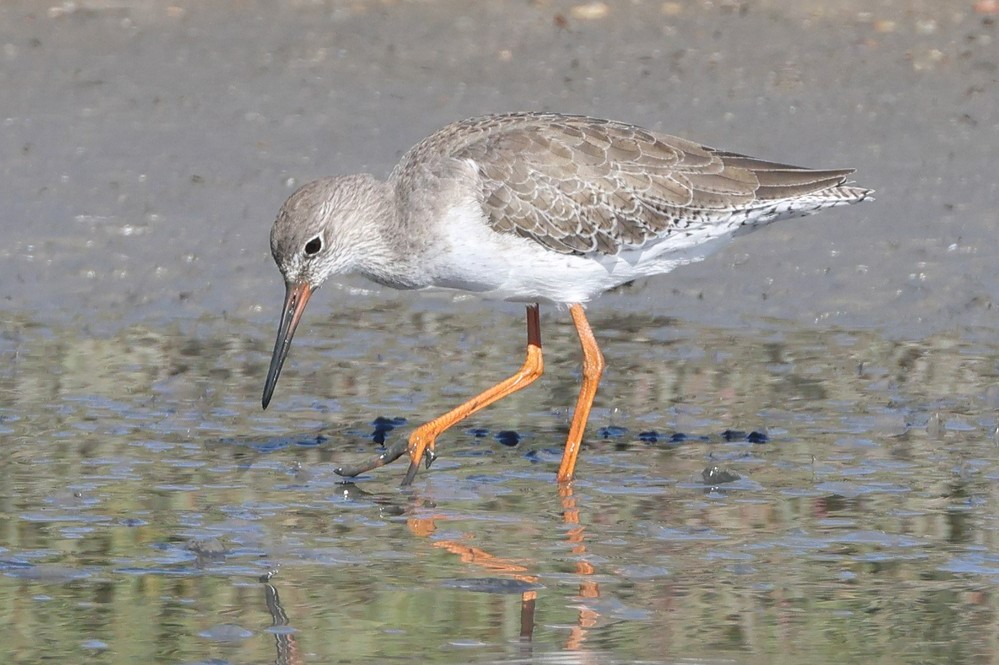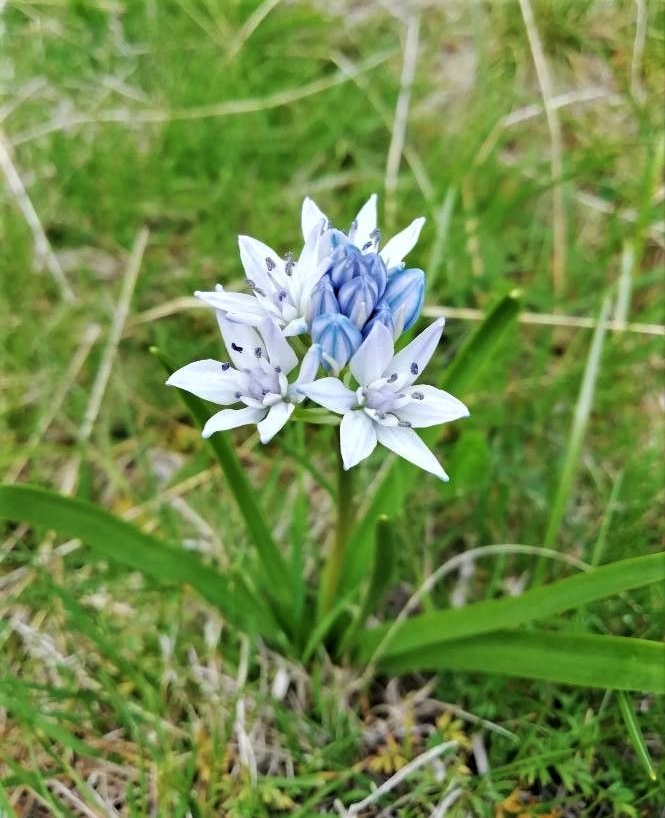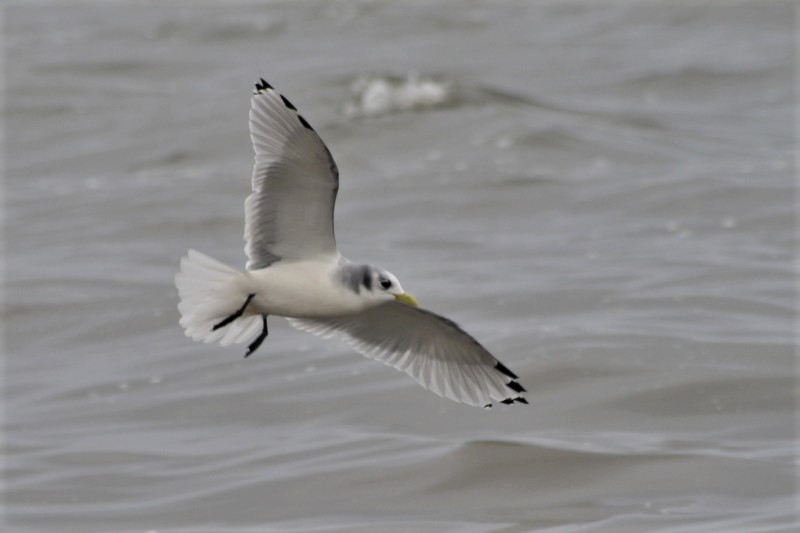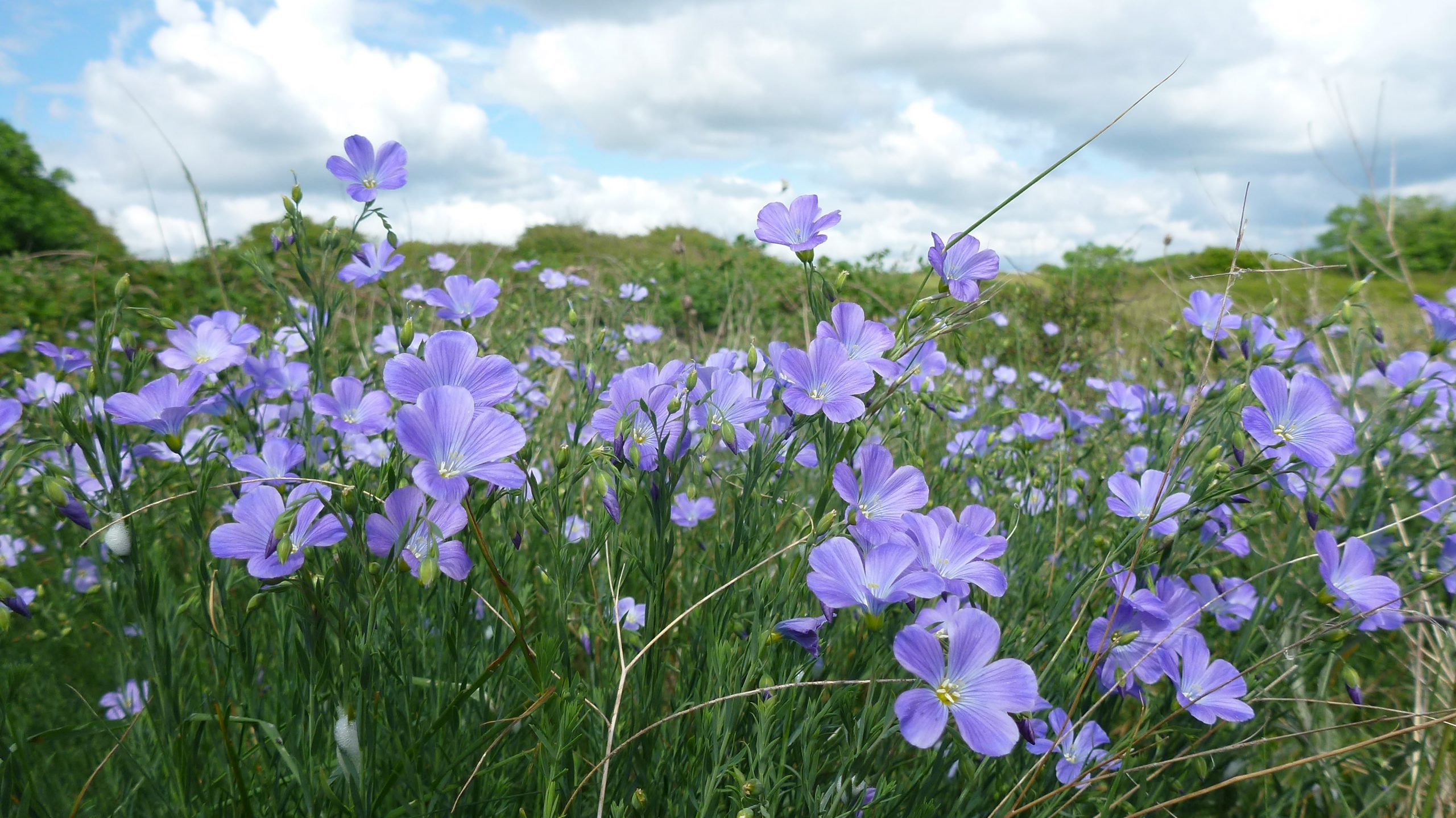
Adventures in Nature
The Galloway & Southern Ayrshire UNESCO Biosphere is a place for exploration and discovery, and our amazing flora and fauna are a big part of this. Below are some of our favourite locations for connecting with nature and spotting some of the very special species that call the Biosphere home.
Wood of Cree, Dumfries & Galloway
The Wood of Cree (SSSI) lies approximately 4km northwest of Newton Stewart. Managed as a nature reserve by the RSPB, it is the largest and most important ancient woodland coppice in the region. Wood of Cree has spectacular waterfalls and deep gorges to capture your imagination. The woodland is of national importance for breeding woodland birds including tree pipit, willow tit and redstart. (A tree pipit is pictured here among the foliage, and a redstart with a caterpillar in its beak.) The site has three freshwater lochs which host an important assemblage of rare aquatic plants including alpine pondweed and marsh St John’s wort. There are two car parks from which visitors can wander 2km of waymarked paths. The nearest toilets and refreshments are in Newton Stewart.
Also pictured are a red squirrel and a roe deer; both species love the variety of food and cover in native woodlands such as this. If you’re thinking of visiting why not take a look at our Wood of Cree video, part of our Adventures in Nature series on YouTube.
Loch Doon, East Ayrshire
Loch Doon is located south of Dalmellington, is home to the last naturally occurring breeding population of arctic char in south Scotland – a rare relative of the salmon. Breeding osprey can be viewed via cameras at the visitor centre next to the Roundhouse Café and will often be seen on their nest or flying to and from it. The ruins of a 13th century castle were moved from an island to the shore when the hydroelectric dam was built – now a scheduled monument, it stands testament to the long history of conflict in the region between the English and Scottish monarchy and aristocracies.
During the First World War the loch was used as a training ground for artillery gunners. There is a caravan & camping park, car parking and access to a series of tracks suitable for walkers and cyclists. In summer refreshments and toilets are available at the Roundhouse Café, while out of season the nearest facilities are in Dalmellington.
Girvan to Ballantrae Coast, South Ayrshire
This stretch of coastline is of international importance for its geology and has been designated as a Site of Special Scientific Interest (SSSI). Igneous rocks dating from the Ordovician period, (488-443 million years ago, pictured right) and sedimentary rocks from the Silurian period (443-428 million years ago) are evidence of an ancient ocean, the Iapetus, which eventually closed and pulled England and Scotland together as one landmass. Fossils of Ordovician and Silurian organisms can be found along the coast and offer an insight into ancient ecosystems.
The Girvan to Ballantrae coast is steeped in folklore, with stories of cannibals and smugglers hiding in caves amongst the rocks. One such tale is of Sawney Bean. Reputedly the leader of a clan of 48 cannibals said to prey on unexpected travellers, Sawney Bean’s cave – the foreboding slit in the cliff pictured right – can be found near Lendalfoot village. It is now believed the story was created by smugglers to scare locals away from their hideouts and loot, and the cave can be a treacherous walk to reach so we advise caution! Coastal flora can be seen in the spring and summer and often gannets can be seen cruising and diving in the area (two gannets pictured right).
The full coastal section can be broken down into two 3.5-hour walks, Ballantrae to Lendalfoot and Lendalfoot to Girvan. Walking conditions are typically moderate-difficult and sturdy footwear is advised. Access to Sawney Bean’s Cave is very steep but worth the effort – and always check the tide times.
Raiders Road Otter Pools, Dumfries & Galloway
The otter pools is a stunning location accessed by the Raiders Road, a 10-mile-long gravel road with stunning views all year round. This road is open to vehicles from April till October but is open throughout the year for walkers, cyclists and horse riders.
The pools offer a variety of wildlife with dragonflies, wagtails, dippers (pictured left) and red kites (pictured left, in flight) often seen. If the area isn’t too busy its possible you may even see otters, but they are notoriously secretive and easily scared off. One otter that won’t disappear in a flash is the statue that can be found looking out into the pools. While you’re there you may also spot another piece of environmental art: one of the Rosnes Benches. Take some time to lie down and see nature from a different perspective!
The otter pools are perfect spot for families. The Black Water of Dee shallows and opens here meaning visitors can dip their feet and kids can splash about. With big rocks for resting and soaking up the sun, it’s the perfect place to relax on a summer day. Toilet facilities and picnic benches allow for longer stays to take in the joy of the location. In the summer when it is incredibly hot this area offers respite in the shade of surrounding trees.
Our Adventures in Nature YouTube series took a drive along Raiders Road to explore.
Knockshinnoch Lagoons, East Ayrshire
This location is a birdwatchers dream. On the migration path between the Clyde and the Solway, you’re likely to see migrant species in autumn. The mudbanks attract many different waders including greenshank, and water voles are known to have runs through the waterways here. The cryptic bumblebee – known as a cuckoo bee as they lay their eggs in the nests of other bumblebees to raise – have been recorded here, as well as the northern mining bee. The beautiful butterfly orchid flowers in the grasslands near the lagoons and spignel (a relative of dill and carrot) can be seen with its feathery leaves and tumbling umbel flowers.
Knockshinnoch lagoons were mined for many years, but the land has been regenerated for wildlife and is now a Scottish Wildlife Trust Reserve. There are paths throughout the reserve – please keep dogs on leads to help protect water birds.
Our video introduction to this fascinating location is on YouTube here. Pictured are the northern marsh orchid, a black darter dragonfly, and a Troilus luridus (shield bug) nymph. Look out for them as you explore!
The Barony A-Frame, Auchinleck (near Ochiltree), East Ayrshire
The Barony A-Frame is evidence of this area’s mining past. The frame was designed for use in the colliery; built in 1954, it was in use until the mine closed in 1990. A restoration project funded by Historic Scotland and the Heritage Lottery Fund was undertaken by the Barony A-Frame Trust in 2007. Since then the landscape surrounding the Grade B listed structure has regenerated into a wildlife haven, as well as play area and picnic site.
The thin acidic soils have given rise to grasslands supporting a beautiful array of plants including eyebrights, bird’s foot trefoil, red bartsia and more; in the spring and summer the place is a buzz with bumblebees and butterflies. Sightings of common blues and dingy skippers are reported (both pictured), as well as the mysterious and parasitic Monotropa hypopiitys or yellow bird’s nest, a ghostly looking plant that is white with no green colour because it lacks chlorophyll; the yellow bird’s nest does not take energy from the sun like most other plants, but rather parasitises it from fungus in the soil! You will hear a dawn chorus in spring with many birds taking to song within the canopy of naturally regenerated birch, beech, willow and scrub and enjoy the eerie silence that comes with a blanket of snow in the winter.
The Barony A-Frame stands testament to the Biosphere’s industrial past and brings it beautifully into the present at all times of year, exploring the area in spring, summer, autumn or winter can be an adventure for all ages. Find out more about the region’s mining history in this video made in partnership with colleagues at the Coalfields Regeneration Trust.
St Ninian’s Cave, Dumfries & Galloway
Located on the coast at the Isle of Whithorn, St Ninian’s Cave is thought to have been the hermitage of St Ninian in the 5th century – a place for solitude and reflection. Whether this can be proved or not doesn’t matter as you can find your own sense of tranquillity and peace here too. A short walk through a wooded glen, fragrant with wild garlic and bluebells in the spring, brings you out to the pebble beach. The cave itself is shallow and must be treated with caution due to risk of rockfall, but it is just as easily enjoyed from the outside.
Local coastal flora include sea campion, spring squill, thrift (pictured left), and scurvy grass and can be seen along the top of the beach and on cliff tops. Dolphins and seals have been spotted off the coast in this area, so bring your binoculars! Always check the tide times before visiting and consider linking this walk with other coastal paths if you have the time.
Pop over to YouTube to join our team on a walk down to St Ninian’s Cave.
Stenhouse Wood, Dumfries & Galloway
Stenhouse Wood, located 1km west of Tynron, is an excellent example of upland ash and mixed deciduous woodland consisting of ash, oak and wych elm. There’s a circular unsurfaced path where you can watch for the spotted and pied flycatchers that breed here in summer. At any time of year you can see the nimble red squirrel, found in the higher branches and tree tops as they are so much lighter than their grey cousins. The locally uncommon and very unusual toothwort grows here (pictured) – it is entirely parasitic, stealing all its nutrients from other plants. Being one of the few plants that does not photosynthesise, it doesn’t have any green colour; keep your eyes peeled for pale pink and white spikes of flowers. In the autumn, broadleaf woodland is perfect for finding mushrooms and practising your ID-ing skills. Pictured here is a clump of Coprinus atramentarius – ink cap fungus.
To see what a walk in Stenhouse Wood looks like on a crisp winter’s day, take a look at our video here.
The Mull of Galloway, Dumfries & Galloway
An astonishingly beautiful landscape at all times of year, this is Scotland’s southernmost point. The Mull of Galloway is a Site of Special Scientific Interest for its sea bird colonies and geology, and is an RSPB-managed reserve.
The Mull of Galloway became part of the Galloway and Southern Ayrshire’s UNESCO designation in 2023, when the request to extend the Biosphere’s geographical boundary was approved following our 10-year Periodic Review. The proposal to ‘bring in the Rhins’ had overwhelming public support and including the Mull of Galloway and the marine environment within the UNESCO Biosphere region has opened up many and varied conservation opportunities.
On a clear day the Mull of Galloway offers views to the Isle of Man, Ireland and the Lake District, and on stormy or overcast days the landscape can feel eerie and beautiful. Listen out for calls of the kittiwakes (pictured right, in flight), peregrines and guillemots, and have your binoculars ready to spot diving gannets and nesting puffins. The coastal grassland and heath don’t just support sea birds, they also provide habitat for wonderful wildflowers such as spring squill (pictured right), sea thrift and sea spleenwort which are best seen in spring and early summer.
The site is exposed and can often be windy, but with the potential to see razorbills, guillemots and gannets, it is worth a cold stroll. In the summer you may be lucky enough to observe activity in the water and on cliff edges – porpoises, grey seals and dolphins are often seen just off the coast. Our first photo here shows a beautiful redshank – note the rich colour of its legs, which gives this wading bird its name.
We took a trip to the Mull of Galloway on a cloudless spring day and had chat with the reserve manager about the wildlife and nature all around. Take a look at our short video for a preview of this outstanding site.

